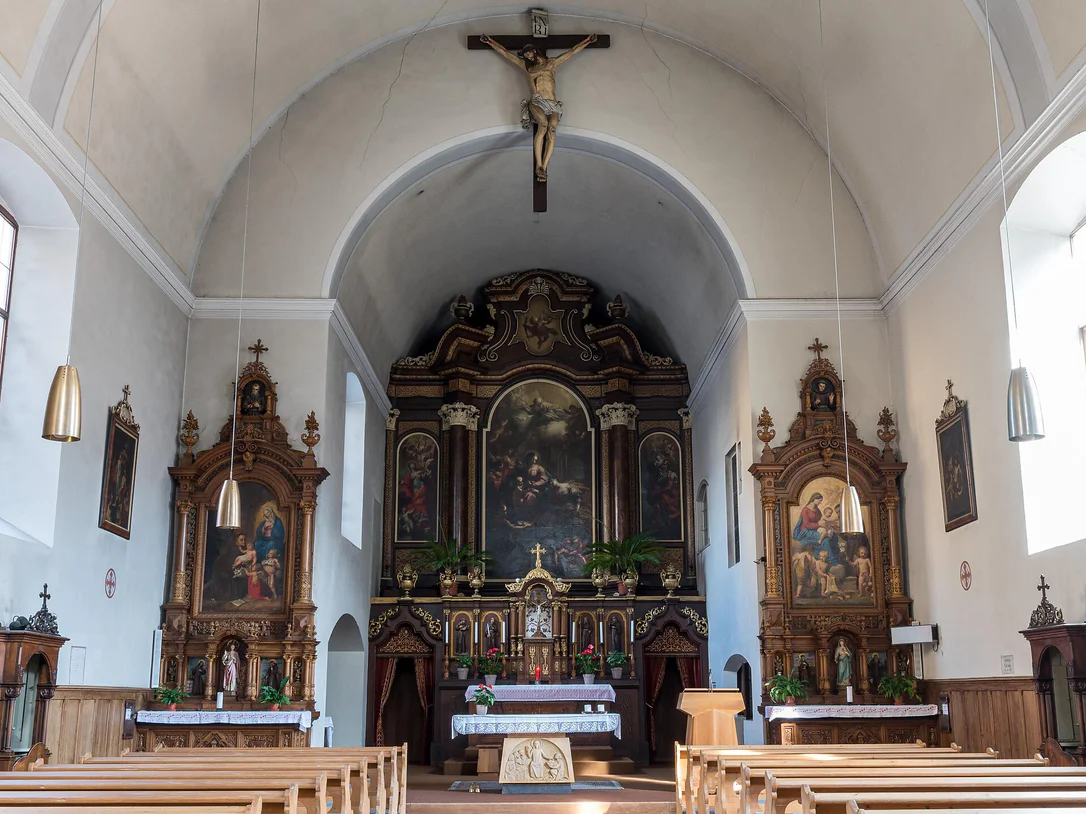The new-Gothic parish church in Scena was built between 1914 and 1931. The old church was continuously found to be too small and it was necessary to construct a more spacious building. The vicinity to the school, the old people’s home, the sexton’s quarters and the widows’ accommodation ensured the central location of the church. After several heated meetings about the planning and actual location, the design of the Vienna architect Eduard Hütter was welcomed and approved. However, in 1915 the building work was stopped due to the start of World War I and only recommenced in 1926 because of the political changes, which had occurred in South Tyrol. The altar area is decorated with the statues of the twelve apostles. The fourteen 14 carved cross stations by Johann Muhry are incredibly impressive. The glass windows come from the Tyrolean glass painting company in Innsbruck. At the side walls of the main church area, the statues of Sains Vigilius, the bishop of Trent, as well as one of Christ King, the blessed Heinrich of Bozen, Saint Nicolas of the Flüe, the apostle Philipp, the evangelist John, the Bishop Valentine and the blessed Josef Freinademetz are found on pedestals. At the back wall, the Baroque figure of Saint Michael takes pride of place. He is presented as a young knight with a flaming sword. This statue previously stood in the Michaels chapel, which was demolished before starting the new parish church building. The new organ was built by Franz Zanin from Udine in 1993 and its cover was artfully designed by Herbert Schönweger from Meran. It consists of 32 registers, the major organ part, the back positive and pedal, as well as 2,744 pipes. Both churches were consecrated to Mary, the mother of God and she is celebrated each year on 15th August. The church tower is 35 metres high and contains seven bells. The smallest one is the Zügen bell, which is struck just after someone in the parish dies. On Sundays and bank holidays, as well as other festivities and occasions such as the Ave Maria, the church bells are rung. For the twelve o’clock ring, the ring for the end of the working day, the ring for bad weather approaching, for weddings, baptisms etc, (the little bell, the second one, the third one, the eleventh one, the twelfth one and the large bell) are sounded. All six bells are only rung together for important festivities. The church is surrounded by well-cared for graves, which are decorated with flowers. The measurements of the graves were standardised in 1972 and at that time, the graveyard was redesigned. It is truly an honourable place for the dead. In between the graves, a simple monument remembers the 108 fallen soldiers in both World Wars.












































































